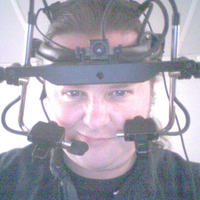Papers by Kaye D. Sweetser

How media diet, partisan frames, candidate traits, and political organization-public relationship communication drive party reputation
Public Relations Review
This study examined the ability of antecedents such as media diet and candidate traits to impact ... more This study examined the ability of antecedents such as media diet and candidate traits to impact political organization public relationships (POPRs), in turn affecting views on party reputation. As expected, survey respondents reported greater levels of relationship-focused communication and higher reputation assessments of their own parties, additionally rating their party's candidate higher in authenticity and character. Connecting media diet and reputation, heavier use of partisan, traditional media (e.g., talk radio and cable news) indicated increased partisan divides, suggesting young and often inexperienced voters engage in motivated reasoning, seeking out information from sources that cater to their existing ideologies. This pattern was less pronounced for infotainment and social media sources, suggesting promising agenda-building opportunities for political PR practitioners. SEM analyses demonstrated the significant influence of candidate traits and POPR on party reputation , though manifestations of effects differed among Democrats and Republicans, the implications of which are discussed.
Journal of Public Relations Research
This national online survey (N = 493) examined the political organization-public relationship (PO... more This national online survey (N = 493) examined the political organization-public relationship (POPR) that voters perceived with their own political party and their opposing political party, as well as voters' assessment of the credibility of candidates running for president during the primary season of the 2016 election. Results indicated that while credibility assessment of one's own party's candidate was much as expected, POPR with the Democratic Party was generally stronger than that with Republican Party across the board. Data showed no support that a poor POPR with one's own party would drive voters to support interloper candidates. Researchers conclude by reflecting on the importance of POPR with the opposing party and what weak relationships may mean for parties in the long term.
Will you run it? A gatekeeping experiment examining credibility, branding, and affiliation within information subsidies
Public Relations Review
Communicated commitment and conversational voice: Abbreviated measures of communicative strategies for maintaining organization-public relationships
Journal of Public Relations Research, 2016
Exploring the Political Organization-Public Relationship in Terms of Relationship, Personality, Loyalty, and Outcomes Among First-Time Voters
International Journal of Strategic Communication, 2015
Partisan Personality: The Psychological Differences Between Democrats and Republicans, and Independents Somewhere in Between
American Behavioral Scientist, 2013
Guidelines for Teaching the Social Media Release
Page 1. Guidelines for Teaching the Social Media Release TIFFANY DERVILLE GALLICANO KAYE D. SWEET... more Page 1. Guidelines for Teaching the Social Media Release TIFFANY DERVILLE GALLICANO KAYE D. SWEETSER derville@uoregon.edu sweetser@uga.edu University of Oregon University of Georgia A previous version of ...
Digital Political Public RELATIONS1
Political Public Relations
Page 304. 14 DIGITAL POLITICAL PUBLIC RELATIONS1 Kaye D. Sweetser With the increased use of digit... more Page 304. 14 DIGITAL POLITICAL PUBLIC RELATIONS1 Kaye D. Sweetser With the increased use of digital communication tools, public relati been noted to return to a more personal" relationship" with key pub outlined in the ...
The Medium and the Message: Comparing Campaign Communication Channel Effects in a Debate
USINESS RESEARCH …, 2008
Page 227. 208 THE MEDIUM AND THE MESSAGE: COMPARING CAMPAIGN COMMUNICATION CHANNEL EFFECTS IN A D... more Page 227. 208 THE MEDIUM AND THE MESSAGE: COMPARING CAMPAIGN COMMUNICATION CHANNEL EFFECTS IN A DEBATE Lynda Lee Kaid, University of Florida lkaid@ jou. ufl. edu Andrew Paul Williams, Virginia Tech apwilliams@ vt. ...
Using a pretest and posttest online experiment (N = 105), this study empirically explored the imp... more Using a pretest and posttest online experiment (N = 105), this study empirically explored the impact of native advertising sponsorship disclosure on organization-public relationships (OPR), credibility, brand attitude, and attitude toward the advertisement. Credibility and brand attitude predicted the two OPR factors; however, OPR was not affected by participants' cognizance of ad sponsorship/disclosure. Brand attitude for obviously sponsored (e.g., ad disclosed) content decreased slightly. However, the presence or absence of sponsorship did not significantly influence either credibility or attitudes toward the advertisement itself. The study also examined perceived information utility.
Social Media Adoption Among University Communicators
Http Dx Doi Org 10 1080 1062726x 2012 626130, Apr 1, 2012
ABSTRACT Long interviews were conducted with university communicators at 2 distant universities w... more ABSTRACT Long interviews were conducted with university communicators at 2 distant universities with distinct social systems. Participants were drawn to adopt social media mainly by relative advantage, compatibility, and trialability attributes of the innovation. Inductive themes that emerged from the interviews included an emphasis on publics, information sharing, cost, and convenience. A believer–nonbeliever distinction among adopters is introduced. Believers are driven by the same characteristics of social media that public relations researchers have found to be essential to the practice of public relations itself: 2-way communication, interactivity, dialogue, and engagement.
How Much Do They Think It Affects Them and Whom Do They Believe?: Comparing the Third-Person Effect and Credibility of Blogs and Traditional Media
Http Dx Doi Org 10 1080 01463370701665114, Nov 16, 2007
Using an experimental design, this study investigated third-person effect and media credibility a... more Using an experimental design, this study investigated third-person effect and media credibility as a result of media attribution. Specifically, we compared third-person effect across four media sources: personal blogs, media blogs, online news, and print newspaper. Overall, participants exhibited third-person effects equally across the mediums. Third-person effect regressed with credibility.
Social Media and Shared—or Divergent—Uses? A Coorientation Analysis of Public Relations Practitioners and Journalists
International Journal of Strategic Communication, Jul 1, 2010
Using a traditional coorientation model (Grunig & Hunt, 1984; Broom, 1977) compar... more Using a traditional coorientation model (Grunig & Hunt, 1984; Broom, 1977) comparing the uses of social media among journalists and public relations practitioners, this survey found a similar though not perfectly aligned overall picture comparing the groups' uses and perceived importance of the tools. In fact, there were only minor differences between the groups with regard to agreement, accuracy, and
Role enactment, employer type, and pursuit of APR
Public Relations Review, 2014
ABSTRACT
A Losing Strategy: The Impact of Nondisclosure in Social Media on Relationships
Journal of Public Relations Research, 2010
Using a posttest-only experimental design with control (N = 409), this study investigated the rol... more Using a posttest-only experimental design with control (N = 409), this study investigated the role of nondisclosure and its impact on perceived relational maintenance strategies in the context of social media campaigns through the relational theory of public relations. As one of the first studies investigating what an organization can do to damage—rather than build—a relationship with their publics, this experiment manipulated
Public Relations Review, 2011
This study investigates the relationship between motivation, leadership and social media use amon... more This study investigates the relationship between motivation, leadership and social media use among a sample of public relations practitioners who recently had begun using Twitter to follow Universal Accreditation Board (UAB)-affiliated organizations. A majority of the survey respondents were classified as "everyday users." A series of Twitter leadership indicators correlated positively with internal motivation and correlated negatively with amotivation. Several word-of-mouth variables also were investigated with regard to motivation.
Social Media and Shared—or Divergent—Uses? A Coorientation Analysis of Public Relations Practitioners and Journalists
International Journal of Strategic Communication, 2010
Using a traditional coorientation model (Grunig & Hunt, 1984; Broom, 1977) compar... more Using a traditional coorientation model (Grunig & Hunt, 1984; Broom, 1977) comparing the uses of social media among journalists and public relations practitioners, this survey found a similar though not perfectly aligned overall picture comparing the groups' uses and perceived importance of the tools. In fact, there were only minor differences between the groups with regard to agreement, accuracy, and
Candidates Make Good Friends: An Analysis of Candidates' Uses of Facebook
International Journal of Strategic Communication, 2008
... 2000) suggests, if part of the reason young adults tend to eschew politics is the unwillingn... more ... 2000) suggests, if part of the reason young adults tend to eschew politics is the unwillingness or inability of ... ANALYZING CANDIDATES' USES OF FACEBOOK 183 ... the organi-zation and its publics, but social media experts argue that allowing publics to communicate with one ...
How Much Do They Think It Affects Them and Whom Do They Believe?: Comparing the Third-Person Effect and Credibility of Blogs and Traditional Media
Communication Quarterly, 2007
Using an experimental design, this study investigated third-person effect and media credibility a... more Using an experimental design, this study investigated third-person effect and media credibility as a result of media attribution. Specifically, we compared third-person effect across four media sources: personal blogs, media blogs, online news, and print newspaper. Overall, participants exhibited third-person effects equally across the mediums. Third-person effect regressed with credibility.
Effects of Bipartisanship Messaging and Candidate Exposure on the Political Organization-Public Relationship
American Behavioral Scientist, 2014











Uploads
Papers by Kaye D. Sweetser